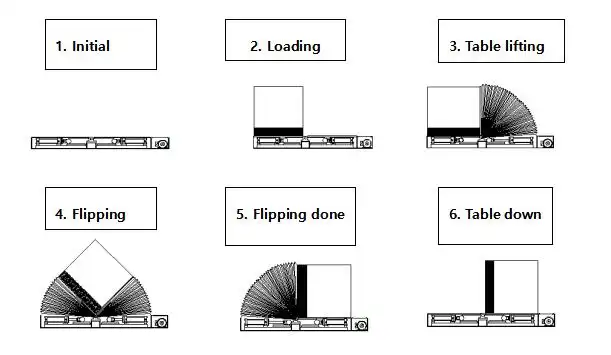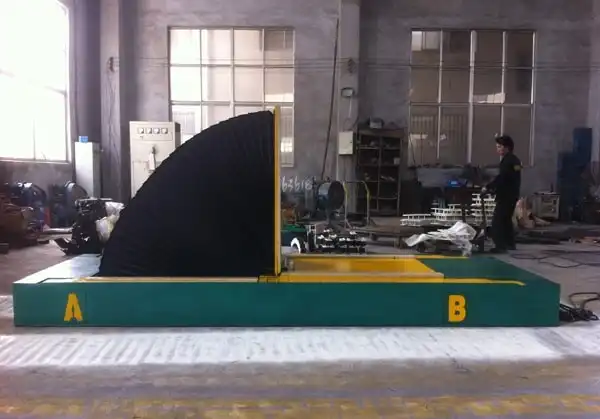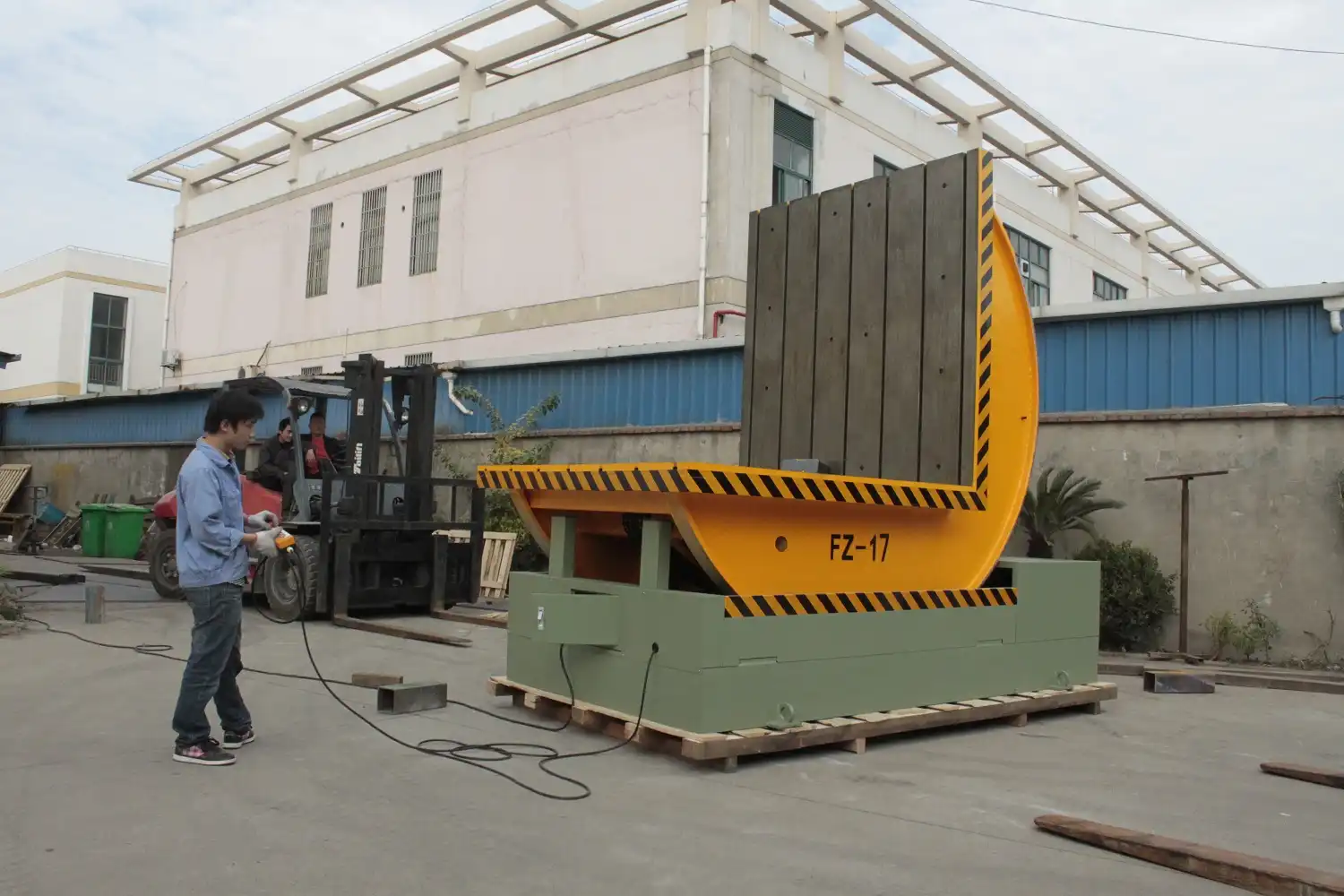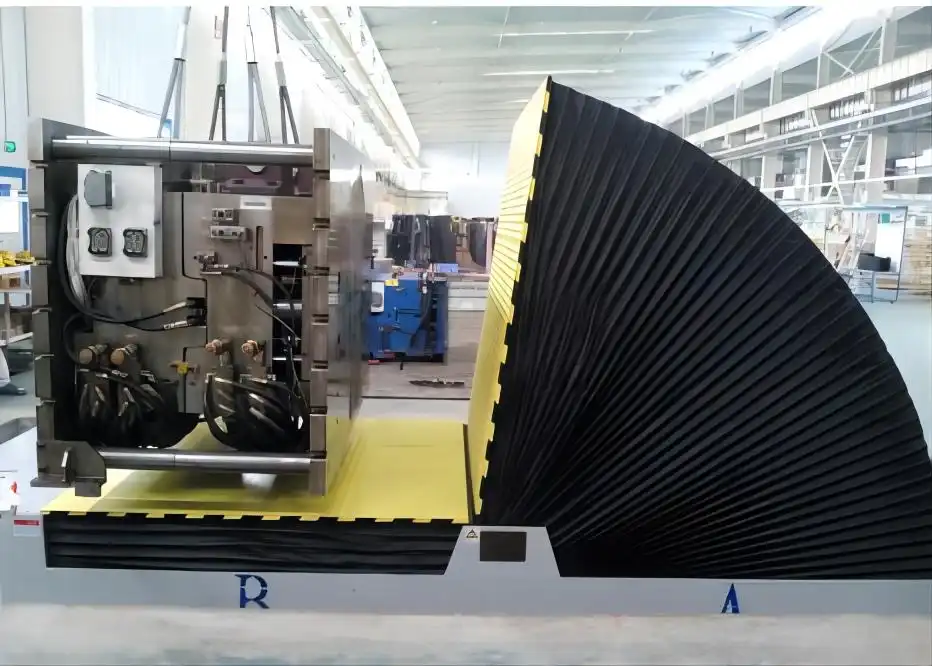Struggling with Coil Handling? Here's How Colombian Buyers Are Solving It
Are you dealing with inefficient and costly coil handling in your steel mill? Do frequent equipment breakdowns, high labor costs, and safety concerns constantly chip away at your profits? You invest heavily in your production lines, but the final packaging stage becomes a frustrating bottleneck. These small, persistent problems add up. They make it incredibly difficult to stay competitive, especially when market demands are unpredictable and energy prices are high. But what if there was a clear, proven path to solve these issues? Across Latin America, particularly in Colombia, steel mill owners are making smart, strategic changes. They are transforming their coil handling operations from a major cost center into a powerful competitive advantage.
Colombian buyers are solving their coil handling struggles by investing in integrated and automated systems. They are replacing old, standalone machines with modern, energy-efficient packing lines that combine conveyance, upending, strapping, and wrapping into one seamless process. This strategic shift reduces the need for manual labor, minimizes costly downtime, and significantly cuts energy consumption, directly addressing the core challenges facing today's steel industry.

This move is much more than just buying new equipment. It's a fundamental change in strategy. It involves looking at the entire workflow, from the moment a coil leaves the slitting line to the second it's loaded for shipping. You might be asking yourself how they are achieving such impressive results and justifying the investment. Let's break down the key questions that forward-thinking leaders like Javier from Mexico, and his peers in Colombia, are asking and answering right now.
How Can Modern Coil Handling Systems Reduce Energy Costs?
Are your monthly electricity bills a source of constant stress? Do you look at your older coil handling equipment and feel like it's just burning money, especially with today's volatile energy prices? Every time that old hydraulic power pack roars to life, it puts a massive drain on your power grid. The worst part is that it often runs continuously, even when the machine is idle, waiting for the next coil. This constant, wasteful power draw, multiplied across multiple machines and shifts, becomes a huge and unnecessary operational expense. It's like a hidden tax on every ton of steel you produce. But there is good news. Modern systems are engineered from the ground up with energy efficiency at their core, and steel producers in Colombia are seeing incredible savings by making the switch.
Modern coil handling systems reduce energy costs by replacing outdated, inefficient hydraulic systems with advanced electro-mechanical drives and servo motors. These modern systems operate on a "power on demand" principle. They only draw significant power during active movements like lifting or turning. This is a stark contrast to old hydraulic packs that must run continuously to maintain pressure. Furthermore, features like regenerative braking on turnstiles and intelligent power management software can lead to total energy savings of up to 40-60% per machine.

The Critical Shift from Hydraulic to Electric Power
For years, heavy-duty hydraulic systems were the standard for coil handling. They were powerful, but also incredibly inefficient. The main problem is that the hydraulic pump has to run constantly to keep the fluid pressurized and ready for action. This means even when a coil car or up-ender is sitting idle, it's still consuming a large amount of electricity. This energy is mostly lost as heat, which often requires additional cooling systems, consuming even more power. On top of that, these systems are prone to oil leaks, which are both a maintenance headache and an environmental concern.
The modern approach uses all-electric systems, driven by high-efficiency servo motors and Variable Frequency Drives (VFDs). The concept is simple: power on demand. The motor uses almost no energy when it's not moving. When it needs to act, the VFD provides the exact amount of power required for the task, with no waste. There's no idle running, no wasted heat, and no hydraulic fluid to leak. I've seen factories where just upgrading the coil car and up-ender cut the packaging area's energy bill in half. It’s a change that directly contributes to a factory owner's goal of reducing unit energy consumption.
A Practical Comparison of Power Systems
To make it clearer, let's compare the two systems directly.
| Feature | Old Hydraulic System | Modern Electric System |
|---|---|---|
| Idle Power Consumption | High (Pump runs continuously) | Very Low (Power on demand) |
| Energy Efficiency | Low (Often 30-50%) | High (Often 85-95%) |
| Maintenance | High (Oil leaks, filter changes, hose replacements) | Low (Fewer moving parts, sealed gearboxes) |
| Control Precision | Moderate | Very High (Precise positioning and speed) |
| Environmental Impact | High (Risk of oil spills, fluid disposal) | Low (No hydraulic oil used) |
This change alone can be a huge step toward meeting ambitious goals, like the 10% reduction in unit product energy consumption that many plant owners aim for. It's a tangible, measurable improvement that starts paying for itself from day one.
What's the Real ROI of Upgrading an Aging Coil Packing Line?
Does your 15-year-old packing line feel like a ticking time bomb? Are you constantly calling your maintenance team to patch it up, all while wondering when the next major breakdown will completely derail your production schedule? The true cost of that aging equipment isn't just in the repair bills and spare parts orders. It's in the hours of unscheduled downtime that destroy your output targets. It's in the inconsistent wrap quality that leads to moisture damage and customer complaints. It's in the constant safety risk you place on your team as they work around obsolete machinery. These hidden costs are often far greater than the price of a new part or a technician's time. By calculating the true Return on Investment (ROI), you can see that upgrading isn't an expense, but a vital investment in stability, quality, and future growth. This is how buyers in Colombia are justifying these projects to their boards.
The real ROI of upgrading an aging coil packing line comes from a powerful combination of factors. It includes a drastic reduction in unscheduled downtime, much lower maintenance and spare parts costs, and reduced labor requirements through smart automation. It also comes from improved material efficiency with less wasted stretch film and strapping, and critically, enhanced worker safety which lowers insurance risks. When you calculate the total cost of ownership over a 3-5 year period, you'll often find it's significantly lower for a new line than it is to keep pouring money into an old, unreliable one.

Looking Beyond the Purchase Price
A factory owner who is serious about numbers, like Javier, needs to perform a strict feasibility analysis. This means we have to deconstruct the hidden costs of not upgrading. Let's start with downtime. If your slitter produces 50 tons per hour and your packing line breaks down for just 4 hours, that's 200 tons of lost production. You can't get that time back. Multiply that by your revenue per ton, and you see a massive financial loss from a single incident. An old line might have several such incidents a month.
Next, consider maintenance. It's not just the cost of a new motor or sensor. It's the hours your most skilled technicians spend on reactive, emergency repairs instead of proactive, preventative maintenance on more critical equipment. Then there's quality. An old wrapper might not apply stretch film with consistent tension. This can lead to loose, unstable packages or, even worse, gaps that let in moisture, causing rust and coil edge damage during transit. One rejected shipment can wipe out the profits of an entire week. When I work with clients, we build a detailed business case. I remember a client in Colombia who was very hesitant to invest. After we sat down and mapped out their monthly downtime and repair costs, they realized a new, reliable line would pay for itself in under 24 months. The decision became obvious.
Quantifying the Gains for a Clear ROI
To make a strong business case, we need to put numbers to these benefits. This table helps illustrate the financial impact of upgrading.
| Cost/Benefit Area | Aging Line (Annual Cost) | New Automated Line (Annual Savings) |
|---|---|---|
| Unscheduled Downtime | $150,000 (Based on lost production value) | +$145,000 (Achieving 98% uptime) |
| Labor Costs | $120,000 (2 operators over 3 shifts) | -$60,000 (Redeployed 1 operator) |
| Maintenance & Spares | $25,000 (Parts and labor) | -$20,000 (Warranty + higher reliability) |
| Material Waste | $10,000 (Inconsistent film/strap use) | -$8,000 (Precise, automated application) |
| Safety & Insurance | High Risk, Higher Premiums | Lower Risk, Potential Premium Reduction |
| Total Annual Impact | $305,000 in Costs & Risks | $233,000+ in Savings & Gains |
The payback period is a simple calculation: (Initial Investment) / (Total Annual Savings). In this conservative example, a $400,000 investment would be paid back in less than two years. After that, the $233,000 in annual savings goes directly to your bottom line, helping you achieve your goal of lowering overall operating costs.
How Does Automated Coil Handling Boost Production Efficiency?
Is your final packaging stage the biggest bottleneck in your entire operation? Do you see freshly slit coils piling up on the floor, waiting to be handled, while your expensive slitting line is forced to slow down or stop? This mismatch in speed and capacity is one of the most common frustrations I see in steel mills. You invest millions in high-speed production machinery, but the final, critical step of handling and packaging can't keep up. This creates disorganized and potentially unsafe conditions on the factory floor, increases the risk of coil damage, and puts a hard cap on your plant's total output. You simply aren't getting the full value from your primary assets. By automating the entire coil handling and packing process, you can create a smooth, predictable, and continuous flow that finally matches the speed of your production lines, unlocking new levels of plant-wide efficiency.
Automated coil handling boosts production efficiency by creating a synchronized and seamless flow from the slitting line all the way to the warehouse. It completely eliminates the manual waiting times and operational bottlenecks that plague older setups. It uses integrated systems like turnstiles, transfer cars, and conveyors to automatically and safely move coils to up-enders, strapping machines, and orbital wrappers. This systematic approach dramatically increases throughput, reduces the cycle time for each individual coil, and allows your entire production line to operate much closer to its maximum rated capacity, helping you reach that goal of 95% utilization.

From Disjointed Steps to an Integrated System
Think about the old way of doing things. A slit coil comes off the recoiler. An overhead crane operator has to pick it up and place it in a staging area. Then, a forklift driver needs to move it to the up-ender. An operator on the floor might have to manually position it. Then it's another move to the strapping station, and another to the wrapper. Each of these steps involves waiting, manual labor, and a high potential for delays or damage. It's a disjointed, chaotic process.
Now, picture an automated line. The coil comes off the slitter and is placed directly onto a turnstile by the coil car. This turnstile can hold multiple coils, acting as a buffer, and it automatically rotates the next coil into position for the packing line. A conveyor then smoothly moves the coil through an eye-to-sky up-ender, into an automatic strapping machine, and then directly into an orbital wrapper. It's a continuous, choreographed flow. There's no waiting, no excess manual handling. The entire process is predictable and fast.
The Power of Buffers and Synchronization
One of the most powerful elements in an automated line is a buffer, like a multi-arm turnstile or an accumulation conveyor. This is a game-changer for Overall Equipment Effectiveness (OEE). The buffer decouples the slitting line from the packing line. This means that if the packing line has a brief stop (e.g., to change a roll of stretch film), the slitting line doesn't have to stop with it. It can continue to offload coils onto the buffer. This single feature is critical for achieving the high equipment utilization rates that modern plants require. The packing line should never be the reason your main production line stops. This is a direct and practical way to achieve a goal like 95% capacity utilization. I've walked through so many plants, and the difference is like night and day. In a plant with a manual process, you see organized chaos. In a plant with an automated line, you see a calm, steady, predictable rhythm. That rhythm is the sound of profitability.
| Metric | Manual/Semi-Auto Process | Fully Automated Line |
|---|---|---|
| Cycle Time per Coil | High & Variable (e.g., 5-10 minutes) | Low & Consistent (e.g., 2-3 minutes) |
| Line Throughput | Limited by manual steps and crane availability | Matches or exceeds slitter output |
| Labor Involvement | High (2-3 people in constant motion) | Low (1 person supervising the system) |
| Data Availability | Manual logs, often inaccurate or incomplete | Real-time data on cycle times, faults, etc. |
This real-time data is another key benefit that links directly to a goal of digital transformation. The automated line can feed data directly into a Manufacturing Execution System (MES), giving you the full production visibility needed to make smart, data-driven decisions.
My Take: Why a Holistic Approach to Coil Handling is Non-Negotiable
Have you ever purchased a new piece of equipment, excited by its advanced features, only to find that it doesn't integrate well with your existing workflow? You end up with a high-tech "island" in a sea of older processes, and the machine fails to deliver the results you were promised. It’s a common and extremely costly mistake. Focusing on a single machine's specifications while ignoring the flow of material and data around it is like buying a Formula 1 engine and trying to put it in a family car. You simply won't get the performance you paid for. The real challenge, and the real opportunity, is making everything work together as one cohesive, intelligent system. This is why I am convinced that a holistic approach is not just a good idea—it is absolutely non-negotiable for success. It means you need a partner, not just a vendor.
A holistic approach to coil handling is non-negotiable because individual machines, no matter how advanced, cannot solve systemic problems of flow and efficiency. True gains in productivity, safety, and cost savings only come from designing a fully integrated system where the material flow, equipment communication, and data collection are completely harmonized. This requires your supplier to understand your entire operation—your specific challenges with energy costs, your labor situation, your production goals, and your market demands—to provide a total solution, not just a standalone piece of equipment.

The Mindset of a Strategic Partner
This is the key difference that leaders like Javier look for. A supplier sells you a machine based on a spec sheet. A strategic partner helps you solve a business problem. A partner will come to your plant and ask the right questions before ever talking about a specific model. They will ask: What is your slitter's cycle time? What are your downstream logistics like? What are your 5-year goals for digitalization and data analysis? What are the environmental and safety regulations you're facing? These questions show they are thinking about your business, not just their sale. This collaborative process is essential for designing a system that truly fits your needs.
The Pillars of a Truly Holistic Solution
A successful solution is built on more than just good machinery. It rests on three integrated pillars:
-
Process and Flow Integration: This is about the physical layout and mechanical "handshakes" between machines. How does the coil car smoothly deliver the coil to the turnstile? How does the conveyor know the exact moment to move the coil from the strapper to the wrapper? This isn't just about bolting machines to the floor; it's about choreographing a perfect mechanical dance to ensure there are no interruptions or bottlenecks.
-
Data and Controls Integration: This is the brain of the system. All the components must speak the same language through a centralized PLC. The packing line needs to be able to report its status, throughput, and any potential faults directly to your plant's MES or SCADA system. This is the foundation for achieving true production visualization and enabling advanced strategies like predictive maintenance.
-
Future-Proofing: A true partner helps you plan for tomorrow. The system should be modular and scalable. Is there space to easily add an automatic weighing and labeling station in the future? Is the control system powerful enough to support AI-driven scheduling algorithms down the road? A holistic solution shouldn't just solve today's problems; it should be a platform for your future growth.
When I left my job as an engineer to start my own factory, I made some of these mistakes myself. I bought the "best" machine in one category, but I didn't think enough about how it would connect to everything else. It created a bottleneck that cost me dearly. It was a painful but valuable lesson. That experience is the reason I founded SHJLPACK with the mission of being a "TOTAL SOLUTION" provider. I'm not here just to sell wrapping machines. I'm here to share the knowledge I gained from my journey to help you succeed and avoid those same costly errors. It's about building a partnership based on shared goals and long-term success.
Conclusion
Investing in a holistic, automated coil handling system is not a cost. It is a strategic investment in the efficiency, stability, and future growth of your entire steel operation.




